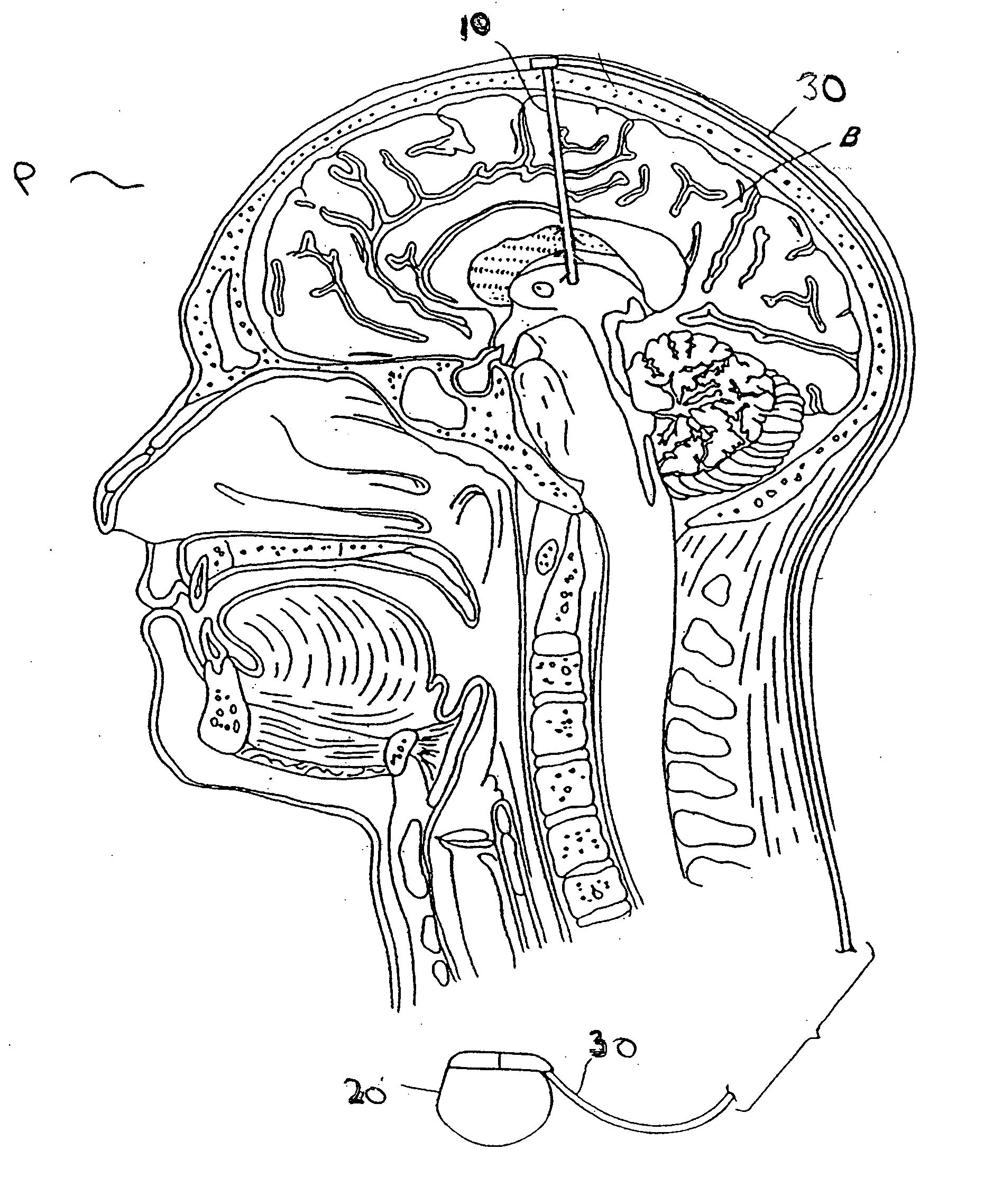Modulation of the pain circuitry to affect chronic pain
a pain circuitry and chronic pain technology, applied in the field of chronic pain modulation, can solve the problems of direct medical and other benefit costs, reduced productivity, and industry losses of about $90 billion dollars annually, and procedures, however, have the fundamental limitation of being inherently irreversible and essentially, little chance of alleviating or preventing potential side effects
- Summary
- Abstract
- Description
- Claims
- Application Information
AI Technical Summary
Problems solved by technology
Method used
Image
Examples
Embodiment Construction
[0012] The present invention relates to methods of affecting chronic pain to regulate, prevent, treat, alleviate the symptoms of and / or reduce the effects of chronic pain. Although not wishing to be bound to any particular definition or characterization, chronic pain can generally be characterized as being nociceptive or non-nociceptive pain. Nociceptive pain, also referred to as somatic pain, involves direct activation of the nociceptors, such as mechanical, chemical, and thermal receptors, found in various tissues, such as bone, muscle, vessels, viscera, and cutaneous and connective tissue. The afferent somatosensory pathways are thought to be intact in nociceptive pain and examples of such pain include cancer pain from bone or tissue invasion, non-cancer pain secondary to degenerative bone and joint disease or osteoarthritis, and failed back surgery. The foregoing examples of nociceptive pain are in no way limiting and the methods of the present invention encompass methods of aff...
PUM
 Login to View More
Login to View More Abstract
Description
Claims
Application Information
 Login to View More
Login to View More - R&D
- Intellectual Property
- Life Sciences
- Materials
- Tech Scout
- Unparalleled Data Quality
- Higher Quality Content
- 60% Fewer Hallucinations
Browse by: Latest US Patents, China's latest patents, Technical Efficacy Thesaurus, Application Domain, Technology Topic, Popular Technical Reports.
© 2025 PatSnap. All rights reserved.Legal|Privacy policy|Modern Slavery Act Transparency Statement|Sitemap|About US| Contact US: help@patsnap.com


